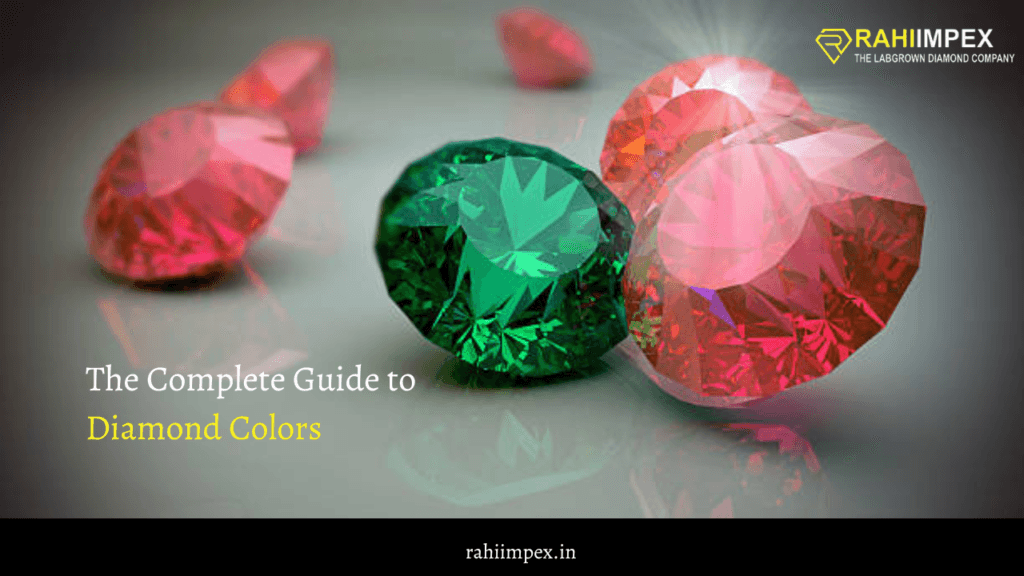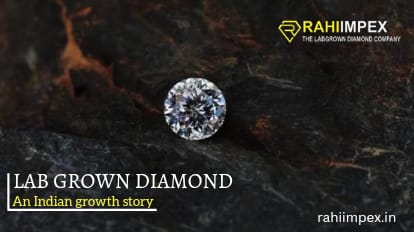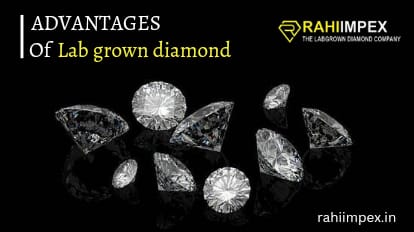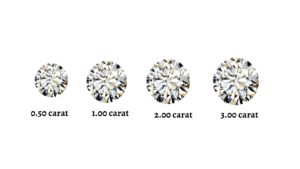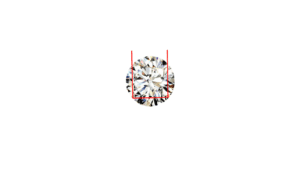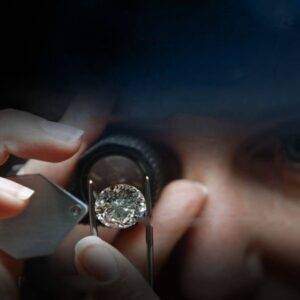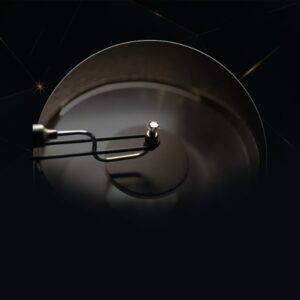Introduction:
Lab-grown diamonds, also known as man-made or synthetic diamonds, are virtually identical to natural diamonds in terms of physical and chemical properties. They are created in a controlled laboratory environment using advanced technology, making them a sustainable and ethical alternative to mined diamonds. One of the most striking features of lab-grown diamond manufacturers is their wide range of colors, which can range from colorless to fancy. In this guide, we’ll take a closer look at the different types of lab-grown diamond colors and how they are created.
Types of Lab-Grown Diamond Colors
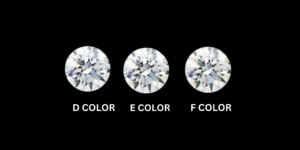
Lab-grown diamonds come in a wide range of colors, which can be divided into three main categories: colorless, near-colorless, and fancy.
Colored Lab-grown diamonds are the most sought-after type, as they are the closest to natural diamonds in terms of color. They are graded as D, E, or F on the diamond color scale, which means they are practically colorless.
Near-colorless lab-grown diamonds are graded G, H, I, or J on the diamond color scale. They have a very subtle yellow or brown tint, which is barely visible to the naked eye.
Fancy shape lab-grown diamonds come in a wide range of colors, such as pink, blue, yellow, green, and more. These diamonds are graded on a separate fancy color scale, which takes into account the intensity, saturation, and hue of the color.
How are Lab-Grown Diamonds Colored?
The color of a lab-grown diamond is determined by the presence of certain impurities or structural defects within the crystal structure. For example, yellow or brown lab-grown diamonds contain small amounts of nitrogen, while blue lab-grown diamonds contain boron.
The color of a lab-grown diamond can also be modified by introducing certain elements during the growth process. For example, adding nitrogen to the HPHT chamber can create a yellow or brown lab-grown diamond, while adding boron can create a blue lab-grown diamond.
Benefits of Choosing Lab-Grown Diamonds
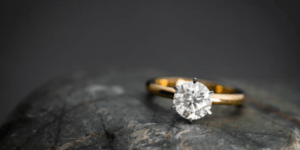
Ethical and Sustainable: Lab-grown diamonds are created in a controlled laboratory environment, which eliminates the need for mining, which can have a negative impact on the environment and local communities.
More Affordable: Lab-grown diamonds are generally more affordable than natural diamonds, making them a great option for those on a budget.
High Quality and Durability: Lab-grown diamonds are virtually identical in terms of physical and chemical properties to natural diamonds, making them just as durable and long-lasting.
More Color Options: With lab-grown diamonds, you have more color options than with natural diamonds, making it easier to find the perfect diamond to suit your personal style and taste.
Conflict-free: Lab-grown diamonds do not have the same ethical concerns as natural diamonds, which can be associated with human rights abuses and funding of conflicts.
Distinguishing Lab-Grown vs Natural Diamonds: A Guide to Identifying the Differences
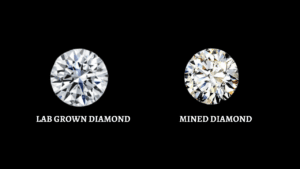
While lab-grown diamonds are virtually identical to natural diamonds in terms of physical and chemical properties, there are a few ways to tell the difference between the two.
Carbon Isotope Analysis: This is a scientific test that can determine whether a diamond is natural or lab-grown by analyzing the carbon isotopes found in the diamond.
Inclusion and Characteristics Examination: Lab-grown diamonds may have different internal crystal patterns and characteristics than natural diamonds, which can be used to identify them.
Certification: Lab-grown diamonds will have a certification from a reputable gemological laboratory, such as the International Gemological Institute (IGI) or the Gemological Institute of America (GIA), indicating that the diamond is lab-grown.
When it comes to buying a diamond, one of the key factors to consider is the color of the stone. Diamonds come in a wide range of colors, from colorless to fancy colors such as pink, yellow, and blue. Each color has its own unique characteristics and can affect the value and appearance of the diamond. In this guide, we will cover everything you need to know about diamond colors and how to choose the right one for you.
Colorless Diamonds
Colorless diamonds are the most sought-after and valuable diamonds on the market. They are graded on a scale from D (colorless) to Z (light yellow or brown). The more transparent a diamond appears, the higher it’s worth, as a lack of hue signifies a higher level of rarity. D-F-graded diamonds are considered to be colorless, while G-J-graded diamonds are considered to be near colorless. These diamonds are the best choice for those who want a diamond that sparkles and shines the most.
Fancy Colored Diamonds
Fancy shape colored diamonds are diamonds that come in colors other than colorless or near-colorless. These diamonds are very rare and valuable and are graded on a different scale from colorless diamonds.
The most common fancy-colored diamonds are yellow and brown, but they also come in other colors such as pink, blue, and green. These diamonds are unique and can be a great choice for those looking for a one-of-a-kind piece of jewelry.
Yellow Diamonds
Yellow lab grown diamonds are the most common fancy-colored diamond. They come in a range of shades, from light yellow to fancy vivid yellow. The intensity of the yellow color affects the value of the diamond.
Light yellow diamonds are less valuable than fancy vivid yellow diamonds, but they can still make a beautiful piece of jewelry. They are a great choice for those who want a unique diamond without breaking the bank.
Brown Diamonds
Brown diamonds are the second most common fancy-colored diamond. They come in a range of shades, from light brown to fancy intense brown. The intensity of the brown color affects the value of the diamond.
Light brown diamonds are less valuable than fancy intense brown diamonds, but they can still make a beautiful piece of jewelry. They are a great choice for those who want a unique diamond without breaking the bank.
Pink, Blue, and Green Diamonds
Pink, blue, and green diamonds are the rarest and most valuable fancy-colored diamonds. They are very hard to find and can be very expensive. Pink diamonds are the most valuable of the three and can be found in shades ranging from light pink to fancy vivid pink.
Blue color lab-grown diamonds are also very rare and can be found in shades ranging from light blue to fancy vivid blue. Green diamonds are the least common of the three and can be found in shades ranging from light green to fancy vivid green.
How to Choose the Right Diamond Color
When choosing a diamond color, it is important to consider your personal preference and budget. Colorless diamonds are the most valuable and sought-after, but they can also be the most expensive.
Fancy-colored diamonds are unique and can make a beautiful piece of jewelry, but they can be very expensive. Yellow and brown diamonds are a great choice for those who want a unique diamond without breaking the bank.
Pink, blue, and green diamonds are very rare and can be very expensive. If you are looking for a one-of-a-kind piece of jewelry, these diamonds can be a great choice.
In conclusion, diamond color is an important factor to consider when buying a diamond. Each color has its own unique characteristics and can affect the value and appearance
The GIA (Gemological Institute of America) color diamond chart is a system used to grade the color of diamonds. The GIA color diamond chart is used to grade diamonds on a scale from D (colorless) to Z (light yellow or brown).
The GIA color diamond chart is divided into five categories:
D, E, and F: These diamonds are considered to be colorless and are the most valuable and sought-after diamonds on the market. They are the best choice for those who want a diamond that sparkles and shines the most.
G, H, I, and J: These diamonds are considered to be near colorless and are a good choice for those who want a diamond that is close to colorless but at a lower price point.
K, L, and M: These diamonds have a slight yellow or brown tint and are a good choice for those who want a diamond that has a unique color.
N to R: These diamonds have a noticeable yellow or brown tint and are a good choice for those who want a diamond that has a unique color.
S to Z: These diamonds have a noticeable yellow or brown tint and are a good choice for those who want a diamond that has a unique color but at a lower price point.
It’s important to note that GIA only grades natural diamonds. The GIA color diamond chart is considered to be the most accurate and reliable system for grading diamond color. When buying a diamond, it is important to ask for a GIA certificate, which will provide the diamond’s grade on the GIA color diamond chart.
When shopping for a colored diamond, here are some additional tips to keep in mind:
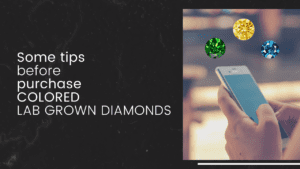
Understand the rarity of colored diamonds: Colored diamonds, particularly pink, blue, and green, are much rarer than colorless or fancy yellow/brown diamonds. As such, they can be much more expensive and harder to find.
Consider the intensity of the color: The intensity of the color is another factor that can affect the value and appearance of a colored diamond. A fancy vivid diamond will have a stronger, more saturated color than a light diamond.
Check for color treatment: Some colored diamonds are treated to enhance or change their color. This is common in yellow and brown diamonds, but less common in fancy colors. Be sure to ask your jeweler if the diamond has been treated, as it can affect the value and durability of the stone.
Look at the diamond in different lighting: Colored diamonds can look different under different lighting conditions, so it’s important to see the diamond in natural light, incandescent light, and fluorescent light if possible.
Compare with other colored diamonds: It’s also important to compare different colored diamonds side by side to get a sense of the variations in color. This can help you make a more informed decision about which diamond is the best for you.
